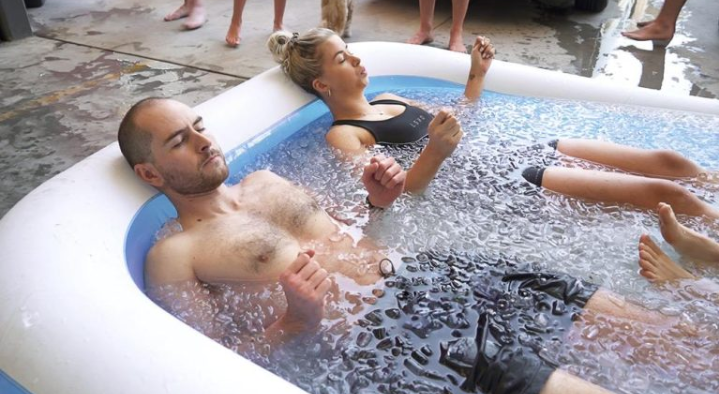
Cold Immersion Therapy: Beyond a Simple Recuperation Technique…
When it comes to rehabilitation or training, there are a variety of methods to assist with our recovery for the next session. One type of therapy that is gaining popularity is cold immersion therapy. Cold immersion therapy, also known as ice baths (or cold showers alternatively), is the act of immersing oneself in cold water (roughly 15 degrees) and is typically used by athlete’s post-match or post-training to boost their recovery. Whilst being in cold water for long periods of time sounds crazy and is most certainly uncomfortable, it should be something to be considered, as it provides a plethora of physical and mental health benefits that can aid in our overall function and quality of life.
Physical Benefits:
Reduction in inflammation: Cold water exposure promotes vasoconstriction and reduces blood flow to the injured area, which results in a decrease in inflammation, as there has been shown to reduce inflammatory cytokines and increases anti-inflammatory markers. With reduced inflammation (redness, soreness, swelling) this can mitigate the pain associated with chronic conditions, injuries, and muscle soreness.
Pain Relief: When we enter cold temperatures, this activates the body’s endogenic analgesic systems (the body’s natural pain relief system), leading to a reduction in pain perception. This is particularly useful for people with chronic pain, as cold water significantly decreases pain intensity and improves pain tolerance.
Enhanced recovery and Tissue healing: Cold water therapy has been found to accelerate the recovery process and facilitate tissue healing. The constriction of blood vessels during cold exposure, followed by the rewarming phase, leads to an increase in blood flow, promoting tissue regeneration and repair. It is worth noting however that cold water immersion (but not cold showers) can limit some gains in hypertrophy, strength or endurance if done in the 4 hours or so after training. So, unless your goal is simply recovering without adaptation, its ideal to wait 6 or 8 hours until after training or do it before training.
Mental Health Benefits:
Improved mood and mental health: Immersion stimulates the release of norepinephrine, a neurotransmitter that is crucial in regulating mood. Cold exposure has shown to increase levels of norepinephrine, which reduces symptoms of depression. Furthermore, the invigorating experience of ice baths can enhance alertness, cognitive function, and overall mental clarity. With improved mental health and mood, this also assists with pain reduction and perceived pain.
Dopamine Physiological Response: Dopamine is the major feel-good chemical associated with pleasure and reward system of our body, contributing to the feelings of well-being and motivation. And when we expose ourselves to col temperatures, even for a short amount of time, we get significant and long-lasting rises in dopamine levels. This effect occurs from getting reward and pleasure from effort (like when we exercise). By enduring the cold, itself we improvements in sustained energy, focus, attention, and goal directed behaviour. Even having short bouts of cold therapy can result in such high increases in dopamine.
Stress reduction: Exposure to cold temperatures triggers the release of endorphins, the body’s natural mood-enhancing chemicals. These endorphins act as natural stress relievers, promoting relaxation and a sense of well-being. The psychological challenge of enduring the cold can improve mental resilience and grit, along with stress management skills.
To make the most of cold-water therapy and stay safe, here are some simple guidelines to follow.
Start Slow: Begin with short exposure times, like 1-2 minutes, and gradually increase the duration as your body gets used to it. Aim for 5-10 minutes per session.
Use Comfortable Temperature: The water should be cool, but not too cold. Aim for a temperature between 10-15 degrees. Avoid extremely cold water or adding ice directly to the bath. Using cold showers is ideal to begin, as you can modify the temp accordingly.
Be Cautious: If you have high blood pressure, circulatory issues, cardiovascular disease or an autoimmune disorder, it’s important to talk to a healthcare professional before trying cold water therapy. They can provide guidance based on your specific condition.
Listen to Your Body: Pay attention to how your body feels during the therapy. If you experience excessive discomfort or feel too cold, reduce the time, or stop the therapy. Everyone’s tolerance to cold is different, so it’s important to find what works best for you.






